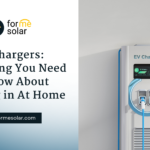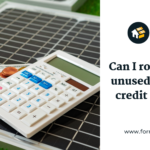
Table of Contents
How Does Utility Company Rate Plan Affect You?
The evolving landscape of energy production and distribution, influenced by aging grid infrastructure, the surge in renewable energy adoption, and unpredictable weather patterns, has compelled utility companies to devise innovative methods for billing customers. These strategies aim to strike a balance between energy supply and demand while ensuring fairness and transparency. In this article, we'll delve into the intricacies of utility company pricing models, shedding light on how they can affect your monthly energy expenses. Additionally, we'll explore how embracing solar-plus-storage solutions can empower you to manage your energy consumption and costs more effectively.
Flat Billing
Flat billing is a widely adopted residential energy pricing model, offering homeowners the convenience of a consistent rate for their energy usage, regardless of the time of day or the total amount consumed. For example, you might find yourself paying a straightforward $0.15 per kilowatt-hour. It's worth noting that some utility companies may tweak this flat rate seasonally to accommodate fluctuations in energy demand and supply.
But here's where solar panels come into play, transforming your rooftop into a strategic asset. When you embrace solar energy, it not only reduces your reliance on the grid but also allows you to leverage your excess power for financial gain. Picture this: on a sunny day, your solar panels are generating more electricity than you're using. Instead of letting this surplus energy go to waste, you can seamlessly send it back to the grid and earn credits on your energy bill. It's like turning your excess energy into dollars.
Furthermore, if you complement your solar setup with a battery storage system, you've got a double advantage. During peak periods when energy costs spike or in the event of an unexpected outage, your battery steps in as a reliable backup, keeping your home powered and your bills in check. It's not just about cost savings; it's about gaining control over your energy usage and having a sustainable and resilient solution at your fingertips.
For example, let's say you generate an extra 100 kilowatt-hours of electricity on a sunny day that you don't use. With net metering, your utility company credits you for this surplus, offsetting future electricity costs. Over time, these credits can add up, resulting in substantial savings. Additionally, when the grid experiences peak demand and prices soar, your battery storage system can automatically switch to stored energy, ensuring you don't draw expensive power from the grid. This not only keeps your bills down but also contributes to grid stability during high-demand periods.
In essence, flat billing, when coupled with solar panels and battery storage, empowers you to take control of your energy consumption, maximize savings, and contribute to a more resilient and sustainable energy future.
Tiered Billing
Tiered billing is a billing structure that breaks down your electricity charges into different levels based on your usage. Essentially, the more electricity you consume, the higher your rate per kilowatt-hour becomes. For example, you might be charged a lower rate for the first few hundred kilowatt-hours of energy and a higher rate for any usage beyond that threshold. It's a pricing model designed to encourage energy conservation and efficiency.
Now, imagine the possibilities when you combine tiered billing with solar panels and battery storage. Here's how it works in action:
Let's say your tiered billing plan offers you a lower rate for the first 500 kilowatt-hours you use each month and a higher rate for any consumption beyond that limit. During the daytime when the sun is shining, your solar panels are generating electricity, and you might even produce more energy than you use. Instead of losing that excess energy, it's captured and stored in your battery for later use.
Now, as evening rolls around and your energy needs increase, you can seamlessly switch to the stored solar power. This means you're using your own generated electricity during the higher-rate tier, reducing your reliance on the utility-provided electricity that would have pushed you into the costlier tier.
Consider this real-life scenario: Jane, a homeowner with solar panels and a battery storage system, is on a tiered billing plan. During the day, her solar panels produce an abundance of energy, charging her battery to full capacity. When she returns home in the evening and her energy usage spikes, instead of drawing power from the grid at the higher rate, her home smoothly transitions to using the stored solar energy. As a result, she avoids crossing into the more expensive tier, saving a substantial amount on her monthly energy bill.
This synergy between tiered billing and solar-plus-storage not only helps you manage your energy costs effectively but also aligns with environmentally responsible practices by reducing your carbon footprint. It's a win-win situation where you conserve energy, lower your expenses, and contribute to a more sustainable future. Embracing solar-plus-storage solutions opens up new possibilities for optimizing your energy usage and ascending the tiers of savings.
Time-of-Use Pricing
Time-of-Use (TOU) pricing is emerging as a transformative billing mechanism throughout the United States. Unlike traditional flat-rate plans, TOU pricing adjusts energy rates dynamically, reflecting the ebb and flow of energy demand and generation costs. This dynamic pricing results in fluctuating electricity prices that vary by the hour, day of the week, season, and even during holidays.
But here's where solar-plus-storage solutions truly shine: TOU pricing rewards you for harnessing the power of timing.
Imagine it's a hot summer afternoon, and electricity demand is surging across your region. During these peak hours, electricity prices skyrocket. But if you've invested in solar panels and a battery storage system, you have a unique advantage. Your solar panels have been diligently capturing sunlight throughout the day, converting it into electricity, and storing the excess energy in your battery.
As the sun begins to set and energy prices reach their peak, your system automatically switches to using the stored solar energy. This strategic move allows you to avoid purchasing electricity from the grid at the highest rates, significantly slashing your energy costs during those crucial hours. Furthermore, your battery storage system provides you with a reliable backup, ensuring that you remain powered up, even during grid outages that might occur when energy demand is at its highest.
For example, Mark, a homeowner with solar panels and a battery storage system, is enrolled in a TOU pricing plan. On a sweltering summer day, Mark's solar panels generate more electricity than he needs. Instead of letting that surplus energy go to waste, it's stored in his battery. When evening rolls around and energy prices surge, Mark's system seamlessly switches to the stored solar power, enabling him to avoid the expensive TOU peak rates. As a result, he experiences substantial savings on his monthly energy bills.
This synergy between TOU pricing and solar-plus-storage not only puts money back into your pocket but also fosters sustainable energy practices. By strategically using your stored solar energy when it matters most, you not only save on costs but also reduce strain on the grid during peak periods, contributing to overall grid stability.
In essence, TOU pricing, when combined with solar-plus-storage solutions, empowers you to make the most of your energy resources, capitalize on timing, and enjoy both financial benefits and enhanced energy resilience. It's a forward-thinking approach that aligns your energy usage with the ebbs and flows of pricing, providing a brighter and more sustainable future for homeowners across the nation.
Demand Charges
Some utility companies are introducing demand charges for residential customers, billing homeowners based on their highest power consumption during a brief period each month. For homeowners with solar panels but no battery storage, coordinating peak energy usage with solar output can be challenging. However, battery storage can help you mitigate demand charges by supplying power during periods of high consumption, reducing your grid reliance and costs.
For homeowners who have solar panels but no battery storage, the challenge is trying to use energy when the sun is shining brightest, which is not always easy. Think about those evenings when everyone's home, lights are on, appliances are running, and devices are charging. Without a battery, this could trigger those unexpected demand charges, making your energy bill jump.
With a battery, you're not just dealing with demand charges; you're outsmarting them. You use less power from the grid and have more control over your energy bills. It's a clever move that adds efficiency and savings to your solar setup. Plus, it gives you a backup power source when you need it most. As utility companies start including demand charges, homeowners with solar panels and batteries are finding smart ways to handle their energy bills and keep their finances in check.
Net Metering
Net metering allows homeowners with solar panels to send surplus energy back to the grid, receiving credits on their energy bills in return. These credits offset future energy costs. However, not all utilities offer full credits for excess energy, leading some homeowners to consider adding battery storage to their solar panels. This approach ensures that surplus energy can be stored and used when needed, rather than exporting it to the grid for minimal compensation.
The concept behind net metering is both environmentally and economically sound. Here's how it works:
- Energy Generation: Solar panels installed on a homeowner's property capture sunlight and convert it into electricity. During sunny periods, these PV systems often generate more electricity than the household requires.
- Grid Interaction: The surplus electricity is sent back to the utility grid through a bidirectional meter, which records both the energy consumed from and returned to the grid. This meter essentially runs backward when excess electricity is sent to the grid, crediting the homeowner's account.
- Credit Accumulation: Homeowners accumulate energy credits for the surplus electricity they generate. These credits are applied to future energy bills.
However, it's worth noting that the effectiveness of net metering can vary depending on the utility company and local regulations. Some utilities may not offer a dollar-for-dollar credit for excess energy, which means homeowners might not receive full value for their surplus electricity. In such cases, homeowners may explore additional options, such as installing battery storage systems alongside their solar panels.
Flat Monthly Subscriptions
Innovative pricing approaches are emerging in the energy sector, such as flat monthly subscriptions. Some utilities are experimenting with this model, offering customers a consistent monthly rate, similar to popular subscription services like Amazon or Netflix. Companies like Uplight are piloting subscription-based packages, providing predictability in energy costs.
By offering flat monthly subscriptions, energy companies are introducing a novel level of transparency and customer-centricity. Imagine no longer having to grapple with fluctuating energy bills driven by weather patterns or seasonal variations. Instead, you receive a fixed bill each month, akin to your Netflix subscription, allowing you to better manage your household budget and plan your finances more effectively.
Moreover, this innovative pricing model encourages energy conservation. When customers are aware of their energy costs upfront, they become more motivated to adopt energy-saving practices, such as investing in energy-efficient appliances or optimizing their heating and cooling systems. It creates a win-win situation, where customers benefit from cost predictability, and the environment benefits from reduced energy consumption.
Conclusion
Navigating the complex landscape of utility company pricing models can be challenging, with different approaches and rate structures in play. However, regardless of the pricing plan you're on, solar and solar-plus-storage solutions empower you to gain more independence from utility companies. These technologies shield you from volatile energy prices, reduce your reliance on the grid, and ensure that you can keep your lights on even during power outages.
As you explore the possibilities of solar energy, be sure to research your state's net metering policies and consider the benefits of incorporating battery storage into your system. By doing so, you'll be better equipped to harness the full potential of renewable energy and take control of your energy bills.
Ready to embark on your journey towards energy independence? Contact a local solar provider today to explore how solar and storage solutions can benefit your home or business. Take charge of your energy future and make a positive impact on both your finances and the environment. Don't wait – start your solar journey today!













